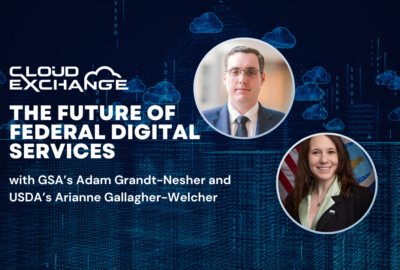How GSA is delivering new IT capabilities faster than ever
David Shive, GSA’s chief information officer, said concepts like human-centered design and user experience has evolved over the last five plus years.
For the General Services Administration, putting its customer at the center of its technology programs isn’t necessarily a new approach.
But what is new for GSA is being able to better understand their current needs and be agile enough to meet their future requirements.
David Shive, GSA’s chief information officer, said the agency’s approach to concepts like human-centered design and user experience has evolved quite a bit over the last five plus years.

“Our primary premise here is we’re not just delivering business systems on time and on budget. We strive to do that, of course, but we are trying to deliver technology capability, what we call digital business capability, based on what people need and what they need right now and what we anticipate they’re going to need in the future,” said Shive after speaking at the recent Imagination conference sponsored by ACT-IAC in Hershey, Pennsylvania. “That’s a fundamental change because what we’re trying to do is anticipate the future and drive those requirements into how we’re going to buy, build and deliver technology. Part of that, though, is knowing that you’re never going to get that exactly right. It’s hard to anticipate the future at 100% accuracy, so also building in the agility and to be able to pivot very quickly in response to those unknown unknowns that are sure to hit us in year one, three or five.”
One example of that is GSA is now delivering new business tools and capabilities, on average, in just over 14 days to the Public Building Service.
“That is from ideation to actually delivery of business capability, in 14.1 days in the most conservative of our business units,” Shive said on Ask the CIO. “That happened because we worked very tightly coupled with our businesses, where they are talking to the people who are actually delivering this capability and telling them what they need. They’re not being prescriptive, saying ‘I need technology X, Y or Z.’ They’re saying this is what I need and allowing the technologist to either buy or build what they need in super rapid time.”
Shive said GSA can do that by leaning on low-code or no-code platforms that allow for rapid application development and through acquisition planning to put those tools in place.
GSA’s been a leader in CX, UX
He added his private sector CIO colleagues also are “pretty amazed” by that average delivery time of 14 days.
“What we’re starting to understand is that people sometimes need stuff fast, sometimes they need stuff slow. But when they need stuff fast, that’s a place where government hasn’t done real well. For the longest time, we’ve developed the capability to deliver at high velocity, at high quality, to meet the needs of our citizens and the timescales that they demand of their government,” he said.
Since 2018, GSA has been at the forefront of the customer experience effort. It was one of the first agencies to name a chief CX officer and established a centralized and consistent data flow for all customer feedback, including quantitative and qualitative data.
This type of data helped GSA, over the years, improve their acquisition systems like SAM.gov. In 2021, for example, GSA leaned into more than 35,000 pieces of feedback from customers about the initial design of the acquisition portal, and the landing pages have gone through 50 different iterations to improve design and functionality through user experience and feedback mechanisms.
Shive said for 2025, one of his top priorities is to improve his enterprise data management. He said one of the biggest barriers to a successful technology program, especially those using artificial intelligence, is poor data.
AI oversight boards
“If the underlying data is poor and generates all types of hallucinations and problems, then it affects the effectiveness of those spaces. So starting about a year and a half ago, I turned Zach Whitman, our chief data officer, on the problem, and we’ve created an enterprise data strategy that sits on a number of years of pretty deep maturation in that space, designed specifically to accelerate our maturity in the data layer so that we can generate good AI outcomes,” he said. “We’re also deeply interested in no longer just cybersecurity and privacy, but safe and ethical use of computing platforms, both internal for internal GSA operations, and how we express those out. We’re pouring tons of time and attention into that space, so that our agency partners, so that the users within GSA, so that citizens that interact with government through GSA products and services can feel confident about the systems that they’re using, that they’re doing things that they were designed to do and only the things they were designed to do.”
Shive said GSA created a privacy and security board to oversee and manage its use of AI and a separate governance board to ensure the agency is investing smartly in the technology.
A third board is centered on safety of AI tools.
“There is some bleed across those governance boards and at some point in the future, it’s likely they will join into one construct,” he said. “But for now, because it’s a truly disruptive technology with a unique set of potential values and risks, we thought it would make sense to be intentional in each of those three domains so that we can express out to all of our stakeholders, no matter who they are, that we are being super intentional about them.”
Copyright © 2025 Federal News Network. All rights reserved. This website is not intended for users located within the European Economic Area.
Jason Miller is executive editor of Federal News Network and directs news coverage on the people, policy and programs of the federal government.
Follow @jmillerWFED







